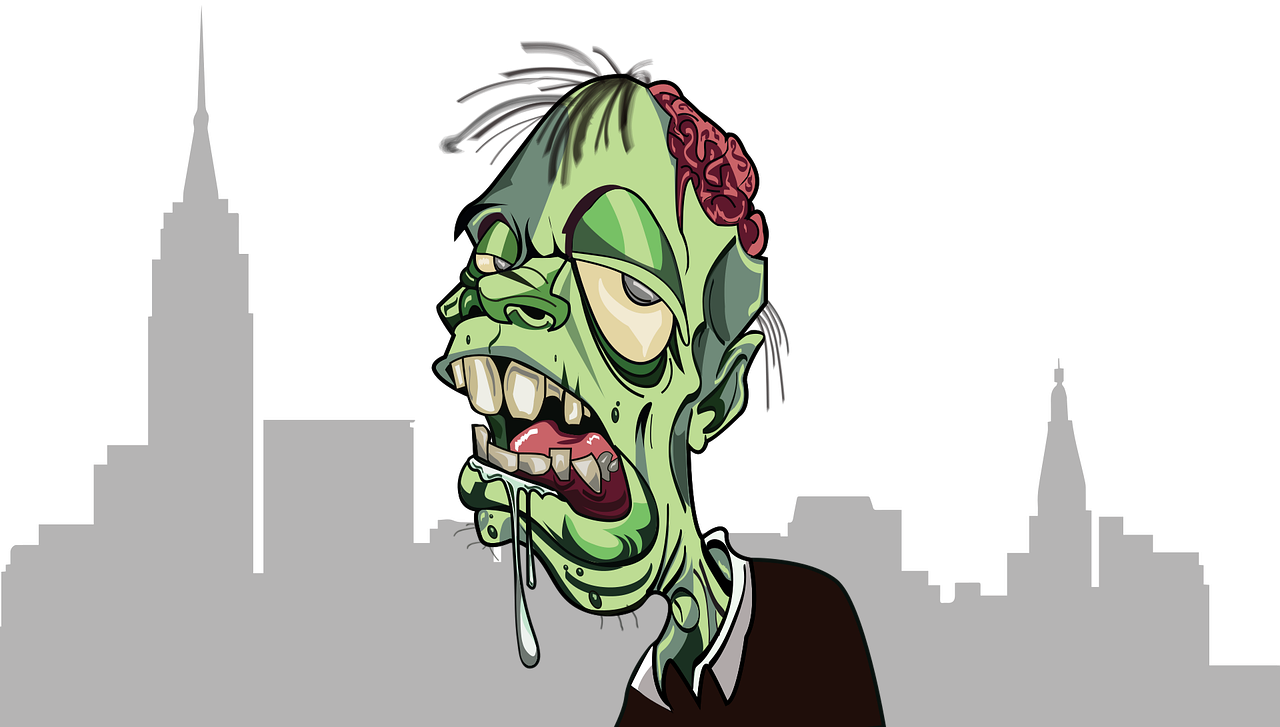Introduction
In the midst of concrete jungles, among towering skyscrapers and bustling streets, there exists a small and agile creature that has learned to thrive in the urban landscape—the squirrel. These charming and resourceful rodents have made cities their home, showcasing remarkable adaptability and resilience. Join us as we explore the intriguing lives of city-dwelling squirrels and how they have become masters of urban survival.
In the midst of concrete jungles, among towering skyscrapers and bustling streets, there exists a small and agile creature that has learned to thrive in the urban landscape—the squirrel. These charming and resourceful rodents have made cities their home, showcasing remarkable adaptability and resilience. Join us as we embark on a journey to explore the intriguing lives of city-dwelling squirrels and how they have become true masters of urban survival.
Adaptive Behaviors: Squirrels have evolved a unique set of behaviors that enable them to flourish in urban environments. They are known for their acrobatic feats, effortlessly navigating through tree canopies, leaping from rooftop to rooftop, and even scaling the sides of buildings. Their agility is a testament to their ability to make the most of the vertical spaces offered by cities.
Nut-Gathering Entrepreneurs: Squirrels are notorious for their nut-gathering habits, which have been adapted to suit urban conditions. Instead of foraging in expansive forests, they scavenge for food in city parks, gardens, and even on university campuses. Their ability to locate and store food in hidden urban nooks and crannies is a marvel of urban adaptation.
Coexisting with Humans: Unlike some urban wildlife, squirrels have a unique talent for coexisting harmoniously with humans. They are a common sight in parks, where they often approach people in search of a snack. This proximity to humans has given rise to endearing moments of interaction that bridge the gap between the natural world and city life.
Architects of Nests: In their quest for shelter, city-dwelling squirrels have turned their attention to human-made structures. They craft nests in attics, chimneys, and tree hollows, demonstrating their ability to adapt their nesting habits to urban environments.
Educational Opportunities: The presence of squirrels in cities offers educational opportunities for residents and visitors alike. Observing these agile creatures can foster a deeper appreciation for the natural world, even within the confines of a bustling metropolis.
The thriving population of urban squirrels serves as a reminder that nature is remarkably adaptable and resilient. It also challenges us to consider our role in creating urban environments that accommodate and celebrate the coexistence of humans and wildlife. As we delve into the lives of these city-dwelling squirrels, we gain a greater understanding of the intricate relationship between the urban landscape and the wild, reminding us that even in the most unlikely of places, nature’s wonders continue to flourish.
Don’t stop here; you can continue your exploration by following this link for more details: Urbanization and the ecology of wildlife diseases – PMC
Squirrels, primarily the Eastern Gray Squirrel (Sciurus carolinensis), are native to North America and are known for their presence in woodlands and suburban areas. However, they have found a new niche in the heart of urban environments. As cities continue to expand, squirrels have followed suit, embracing the challenges and opportunities presented by city life.
Squirrels, primarily the Eastern Gray Squirrel (Sciurus carolinensis), are native to North America and are known for their presence in woodlands and suburban areas. However, they have found a new niche in the heart of urban environments. As cities continue to expand, squirrels have followed suit, embracing the challenges and opportunities presented by city life.
These adaptable creatures have exhibited several remarkable behaviors that allow them to not only survive but thrive in urban jungles. One of their most striking adaptations is their acrobatic prowess. In the urban landscape, they’ve become adept at navigating power lines, leaping from rooftop to rooftop, and even performing astonishing mid-air leaps from tree to tree. Their agility helps them access valuable resources like food and shelter in a city where green spaces are often limited.
Squirrels have also demonstrated an uncanny ability to adapt their diets to urban offerings. While they still rely on traditional sources of sustenance such as nuts and seeds, they’ve expanded their culinary horizons to include discarded human snacks and scraps. Parked cars with sun-warmed engines have become cozy rest stops, providing shelter from the elements during cold winters.
Their nesting habits have evolved as well. Squirrels now fashion nests in unexpected places, such as the attics and eaves of buildings, where they can comfortably raise their young. They’ve even developed a knack for repurposing urban debris like newspaper and insulation to create cozy nests.
The presence of squirrels in urban areas serves as a charming reminder of the resilience of nature. Their daily antics, from foraging in city parks to playing acrobatic games on city streets, offer a touch of the wild in our otherwise concrete-dominated landscapes. Moreover, these urban squirrel populations can provide valuable insights into the broader field of urban ecology, helping researchers understand how wildlife adapts to human-altered environments.
As squirrels continue to carve out a niche for themselves amidst the hustle and bustle of urban life, they serve as a testament to nature’s ability to adapt and thrive in unexpected places. Their story encourages us to appreciate and respect the wildlife that shares our urban spaces and underscores the importance of finding ways to coexist harmoniously with the natural world, even in the heart of the city.
For a comprehensive look at this subject, we invite you to read more on this dedicated page: Forest Park | Portland Parks & Recreation

City squirrels have developed several key adaptations that enable them to flourish in urban environments:
City squirrels, those ubiquitous inhabitants of our urban landscapes, have demonstrated remarkable evolutionary flexibility, honing a set of key adaptations that not only enable their survival but also their flourishing amidst the hustle and bustle of city life. These adaptations are a testament to their ability to carve out a niche for themselves in the concrete jungles we create:
Dietary Versatility: City squirrels have become culinary experts, diversifying their diets to include not only their traditional fare of nuts and seeds but also scavenging for discarded human food. They are often spotted nibbling on pizza crusts, french fries, and even hot dog buns, showcasing their ability to adapt to the availability of new food sources.
Urban Navigational Skills: Navigating the complex grid of city streets and buildings is no small feat, but city squirrels have developed impressive spatial intelligence. They are adept at traversing rooftops, electrical wires, and even subway tracks, all while locating hidden caches of food they’ve stored away for leaner times.
Nocturnal Behavior: While their rural counterparts are typically diurnal, city squirrels have adjusted their schedules to become more active during the early morning and late evening hours when human activity is reduced. This adaptation allows them to avoid the commotion of the daytime urban rush.
Nesting Sites: Squirrels have adapted to city living by finding alternative nesting sites in the form of building ledges, attics, and even the nooks and crannies of skyscrapers. These cozy urban hideaways provide protection from predators and the elements.
Social Tolerance: City squirrels have also shown a surprising level of tolerance for human presence. They often coexist with us in close proximity, exhibiting a familiarity that is not commonly seen in their rural counterparts. Some even engage in playful antics, capturing the hearts of city residents and tourists alike.
Quick Learning: The adaptability of city squirrels is further demonstrated by their quick learning. They can decipher the nuances of traffic patterns, recognize the faces of regular park visitors, and adapt their behavior accordingly. This ability to learn and adjust on the fly helps them avoid potential dangers and capitalize on opportunities.
Communication: Squirrels are known for their vocalizations, and city squirrels have developed unique calls and signals to communicate in the urban environment. These vocalizations may serve to warn others about nearby predators or to establish territory boundaries within urban green spaces.
In essence, city squirrels are living proof of nature’s remarkable capacity to adapt to ever-changing surroundings. Their ability to thrive in urban environments showcases the extraordinary resilience and resourcefulness of wildlife in the face of human-driven changes. Observing and appreciating these adaptations can foster a deeper connection between city dwellers and the natural world that persists, and even thrives, amidst our urban landscapes.
For a comprehensive look at this subject, we invite you to read more on this dedicated page: The advantage of living in the city: effects of urbanization on body …

The presence of squirrels in cities can evoke mixed reactions among residents. Some find them endearing, while others view them as pests. Common issues include squirrels rummaging through trash bins, feasting on garden plants, or nesting in attics. Concerns may also arise about the potential for property damage and the spread of diseases like leptospirosis.
The presence of squirrels in urban areas undeniably stirs a range of emotions among residents, reflecting the diverse perspectives on these small, bushy-tailed rodents. This mixed reception often stems from the various interactions and challenges that city dwellers experience when sharing their surroundings with squirrels:
1. Endearing Neighbors: For many urban residents, squirrels are cherished neighbors. Their playful antics, agility, and boundless energy can be a source of amusement and wonder. Watching squirrels leap between trees or perform acrobatic feats while foraging for food is a delightful reminder of the natural world within the city.
2. Pesky Intruders: However, not everyone shares this sentiment. Squirrels’ natural behaviors, while charming to some, can be disruptive to others. Common grievances include squirrels rummaging through trash bins in search of food scraps, which can result in litter strewn about streets and sidewalks. Additionally, squirrels feasting on garden plants can be a source of frustration for gardeners who invest time and effort in cultivating their green spaces.
3. Nuisance in Homes: One of the most significant challenges associated with urban squirrels is their propensity to seek shelter in attics, chimneys, and crawl spaces. While squirrels may view these spaces as cozy nesting sites, homeowners often face costly property damage. Squirrels can chew through insulation, wiring, and structural materials, posing a real threat to the integrity of buildings.
4. Disease Concerns: There are also concerns about disease transmission, with leptospirosis being a notable example. Leptospirosis is a bacterial infection that can be carried by squirrels and transmitted to humans through contact with their urine or feces. Although the risk of transmission is relatively low, it underscores the importance of avoiding direct contact with wildlife and practicing good hygiene.
Addressing these challenges requires a balanced approach that respects the presence of squirrels in urban environments while mitigating potential conflicts. This includes:
– Public Awareness: Public education campaigns can help residents understand squirrel behavior, their role in urban ecosystems, and the importance of responsible interactions. Learning about the natural history of squirrels can foster a deeper appreciation for their place in the city.
– Responsible Behavior: Encouraging responsible pet ownership and securing trash cans are practical steps that residents can take to minimize conflicts with squirrels. Implementing squirrel-proofing measures for homes, such as sealing entry points and using deterrents, can help prevent costly property damage.
– Conservation Efforts: Promoting green spaces and habitat preservation within cities can provide alternative natural areas for squirrels and other wildlife to thrive, reducing their reliance on human-made structures.
In conclusion, the presence of squirrels in urban areas is a complex issue that reflects the intricate relationship between humans and wildlife. While challenges exist, such as property damage and disease concerns, squirrels also bring a touch of nature to city life. By fostering understanding, practicing responsible behavior, and implementing conservation measures, residents can coexist harmoniously with these adaptable urban dwellers, ultimately enriching their connection to the natural world within the city’s limits.
To delve further into this matter, we encourage you to check out the additional resources provided here: Numbers of Human Fatalities, Injuries, and Illnesses in the United …

Efforts to manage city squirrel populations and minimize conflicts involve public education, responsible behavior, and conservation measures. Public awareness campaigns aim to educate residents about squirrel behavior, discourage feeding, and promote responsible pet ownership. Implementing squirrel-proof trash containers and securing gardens can help reduce potential conflicts.
Efforts to manage city squirrel populations and foster peaceful coexistence between humans and these agile urban creatures are multifaceted and require a combination of public education, responsible behavior, and conservation measures. By embracing these strategies, we can create a more harmonious environment for both residents and squirrels.
Public Education: Public awareness campaigns play a pivotal role in managing city squirrel populations. These initiatives aim to inform residents about squirrel behavior, habitat needs, and the importance of maintaining a respectful distance. Educating the public about the harm caused by feeding squirrels, intentional or unintentional, is a crucial component of these campaigns. By understanding that feeding can lead to overpopulation and dependence on human-provided food, residents are more likely to refrain from offering handouts.
Responsible Behavior: Encouraging responsible behavior among city residents is paramount. This includes refraining from feeding squirrels, as mentioned, but also extends to maintaining a clean environment. Properly disposing of litter and securing trash cans can prevent squirrels from accessing food scraps, reducing their incentive to forage in residential areas. Additionally, responsible pet ownership entails supervising pets when they encounter squirrels to avoid confrontations that can lead to injury or stress for both parties.
Conservation Measures: Implementing practical conservation measures can significantly mitigate conflicts with city squirrels. Squirrel-proof trash containers, designed to resist tampering, can prevent scavenging and reduce messes caused by squirrels rummaging through garbage. In gardens and green spaces, installing protective barriers or using squirrel-proof bird feeders can safeguard plants and feed intended for birds, reducing competition and potential damage caused by squirrels.
Habitat Preservation: Preserving natural habitats within the city, such as parks and green spaces, is essential for squirrels. These areas provide vital resources like food and shelter. Conservation efforts that focus on maintaining these green spaces ensure that urban squirrels have access to the resources they need to thrive.
Research and Monitoring: Continual research and monitoring of urban squirrel populations are essential to understanding their behavior and population dynamics. By collecting data on squirrel habits and distribution, urban planners and conservationists can make informed decisions about population management strategies.
In conclusion, managing city squirrel populations and reducing conflicts require a holistic approach that combines public education, responsible behavior, and practical conservation measures. By working together to create a more squirrel-friendly urban environment, we can enjoy the lively presence of these furry residents while minimizing the challenges that can arise from our coexistence. Ultimately, the goal is to maintain a balanced ecosystem where humans and squirrels can share urban spaces harmoniously.
For a comprehensive look at this subject, we invite you to read more on this dedicated page: The evolutionary consequences of human–wildlife conflict in cities …

In conclusion, the presence of squirrels in the city is a testament to the adaptability of wildlife in the face of urbanization. These agile rodents have proven that nature can find a way to thrive even in the most unlikely places. By understanding and appreciating the lives of city squirrels, we can foster a harmonious relationship between urban dwellers and the wildlife that shares our urban spaces, ultimately enriching our connection to the natural world and the lessons it offers in adaptability and resilience.
In conclusion, the ubiquitous presence of squirrels within our cities stands as a remarkable testament to the incredible adaptability of wildlife when confronted with the challenges of urbanization. These agile and resourceful rodents have shown us that nature, with its tenacious spirit, can find a way to flourish even in the most unlikely and concrete-laden environments.
The story of city squirrels is one that resonates with the human experience in urban landscapes. Their ability to navigate bustling streets, bustling sidewalks, and towering skyscrapers mirrors our own capacity to adapt and thrive amid the hustle and bustle of city life. It serves as a living reminder that, no matter how much we reshape our surroundings, nature finds a way to persist, adapt, and, indeed, thrive.
Understanding and appreciating the lives of city squirrels can open our eyes to the wonders of the natural world even within the heart of our metropolises. These tiny creatures, with their acrobatic antics and relentless pursuit of sustenance, can become ambassadors for urban biodiversity. They remind us of our interconnectedness with the natural world, despite our concrete surroundings.
Moreover, the presence of city squirrels invites us to reflect on our role as stewards of the environment. By recognizing their resourcefulness and resilience, we are inspired to take proactive steps in preserving and enhancing the habitats that support urban wildlife. Initiatives such as maintaining green spaces, planting native vegetation, and reducing pollution can create a more hospitable environment for both humans and the creatures with which we share our cities.
In essence, by embracing the story of city squirrels, we not only enrich our connection to the natural world but also learn valuable lessons in adaptability and resilience. These adaptable rodents serve as a testament to the enduring power of nature and the potential for harmonious coexistence between humans and wildlife in urban settings. As we continue to build and expand our cities, let us do so with a deep appreciation for the wildlife that accompanies us and a commitment to preserving the beauty of the natural world, even within the heart of our urban jungles.
Explore this link for a more extensive examination of the topic: Evolution and behavioural responses to human-induced rapid …

More links
You can also read more about this here: Squirrels and the City » Rackham Graduate School: University of …
